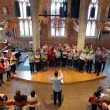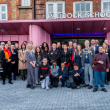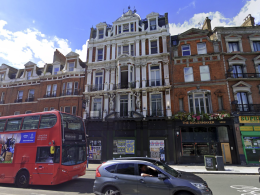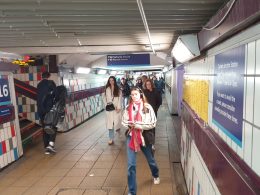The abandoned Lloyd’s Bank building on Putney High Street has cleared a significant hurdle toward transformation into eight flats, winning support from Wandsworth’s heritage watchdog despite concerns about one architectural detail.
The Conservation and Heritage Advisory Committee backed plans to convert the upper floors of 110-112 Putney High Street into residential units while retaining commercial space at street level, marking progress for one of “only two buildings worth even a glance on Putney High Street,” according to architectural historian Nikolaus Pevsner.
The building at number 110, designed by renowned church architect Edward Morf, has stood empty since Lloyd’s closed its doors in April 2024, the seventh bank to desert Putney High Street in recent years. The closure left Putney with just two banks: NatWest and Metro.
The proposal would add mansard roofs and rear extensions to create two studio flats, three one-bedroom units, and three two-bedroom flats above ground-floor commercial space.

Andrew Catto, representing the Putney Society, threw his weight behind the scheme at Tuesday’s committee meeting. “We are thoroughly supportive,” he said, noting that mansard extensions have become standard across Putney High Street without harming its character.
But Catto raised one critical concern: how developers plan to support floor plates against the bank’s distinctive double-height window. “It would be essential that this was completed to a very high standard,” he told the committee, requesting the detail be subject to separate approval.
The building has deteriorated since the bank’s closure. “It’s in a very poor condition,” Catto noted. “Lloyd’s Bank first expanded next door and then took down all their signage when they closed.”
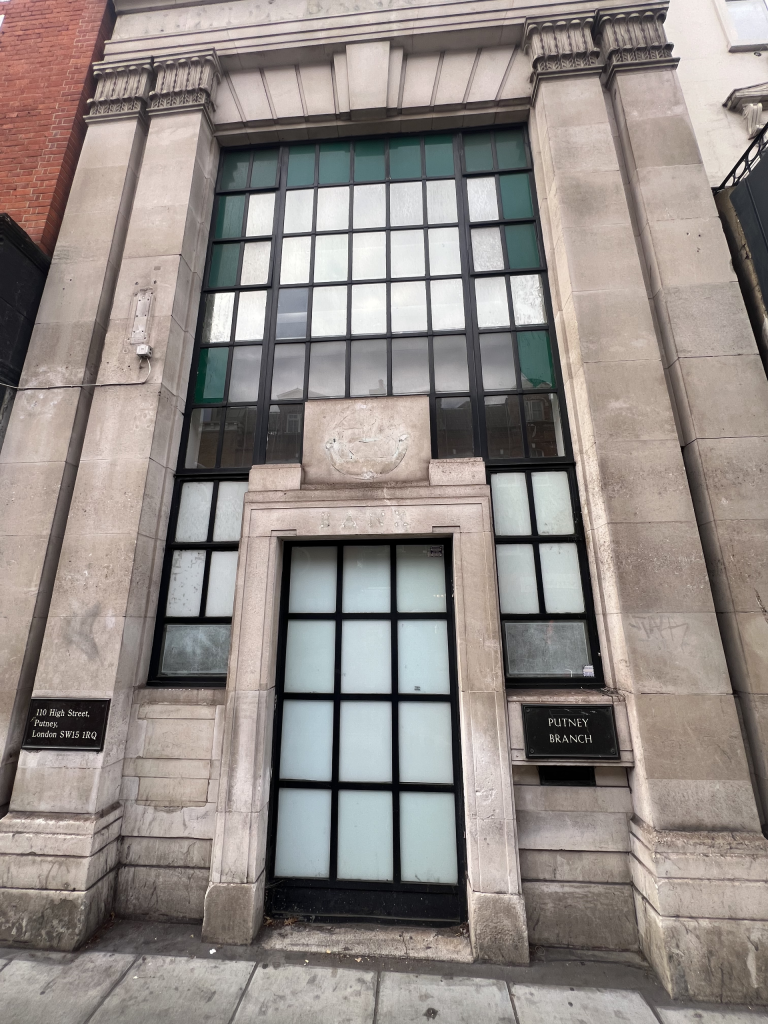
When Lloyd’s shuttered the branch, estate agents advertised the property to rent for £127,500 a year: a price that, combined with Putney’s high business rates, has likely contributed to it remaining vacant for 18 months.
Not everyone was convinced by the conversion design. Councillor Ayres found it “strange” that the plans treat the two buildings as identical internally despite their dramatically different exteriors. Mr Dodgson questioned whether a mansard was appropriate for “such a striking stone fronted building.”
But committee member Peter Farrow defended bold architectural moves, calling the existing facade “absolutely amazing” and criticising the tendency to shy away from dramatic designs.
The committee’s general support means the application can proceed, though developers will need to satisfy concerns about the window treatment before final approval.
Methodist Church accessibility project also backed
In a double win for Putney, the same committee unanimously supported Putney Methodist Church’s plans for an accessible entrance ramp and solar panel installation on Upper Richmond Road.
The proposals, first reported by Putney.news in July when they were submitted, aim to make the Grade II listed church completely self-sufficient in electricity generation through solar panels covering the south-facing roof slope. The project also includes power-assisted entrance doors and an air source heat pump.
The new step-free ramp will replace an awkward side entrance currently used by those with mobility needs, offering what the church describes as “a more dignified and welcoming approach” for wheelchair users and parents with prams.
Councillor Ayres, who worked at St James’s Piccadilly when it became the first listed church to install solar panels, praised the scheme. Andrew Catto confirmed the Putney Society’s full support: “We are thoroughly in support.”
One committee member raised concerns about the ramp design appearing as a separate “disabled access” feature rather than being integrated into the main entrance, but this didn’t diminish overall enthusiasm for the project.
The Methodist Church’s national Listed Building Advisory Committee has already backed the proposals, concluding that the “less than substantial” heritage impact would be outweighed by the public gains in accessibility and climate resilience.
If approved by the full planning committee, construction could begin later this year.
Heritage Committee on a winning streak
Tuesday’s decisions continue a remarkable run of success for the Conservation and Heritage Advisory Committee. For the first time in the committee’s history, every one of its recent recommendations to refuse planning permission has been upheld by council officers.
Three controversial applications – at Moira Court in Balham, Greenview Court in Wandsworth, and The Grapes pub in Wandsworth Town – were all refused following committee objections, marking what Chair Michael Jubb called an unprecedented alignment between heritage experts and planning decisions.
The committee meets quarterly to review planning applications affecting conservation areas and listed buildings across the borough.
More High Street movement
In a sign that the High Street may be edging toward recovery, this week has also seen developers formally request (2025/3946) the demolition rundown buildings on the corner of Putney High Street and Putney Bridge Road to build new retail unit and a hotel.
“Proposal: Demolition of existing buildings and erection of a mixed use development of between seven and ten-storeys, plus basement level, to provide flexible Class A1/A2/A3 uses (shops, financial and professional services, restaurants and cafes); Class B1(a) offices, and a hotel, together with associated works including a landscaped public courtyard and cycle parking facilities.”


